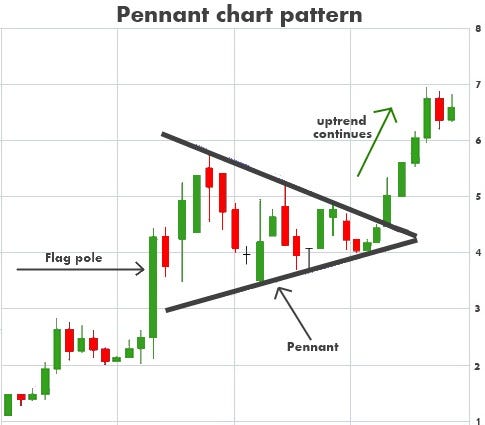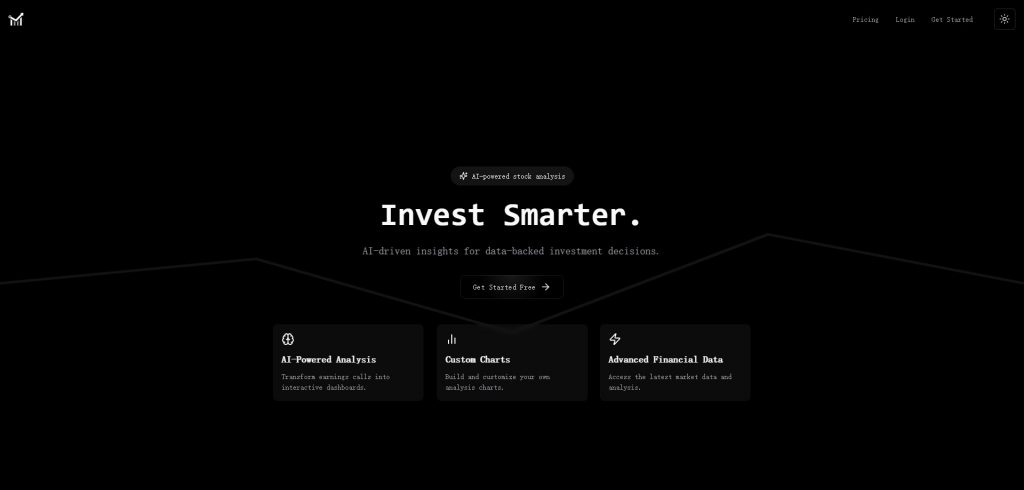20 Good Ideas For Deciding On Canadian Ai Stocks Websites
20 Good Ideas For Deciding On Canadian Ai Stocks Websites
Blog Article
Top 10 Tips To Evaluate The Strategy Customization Of Ai Stock Predicting And Analyzing Trading Platforms
AI trading platforms that predict/analyze stocks are renowned for their ability to customize strategies to meet the requirements of users. This lets them adapt to specific trading goals and conditions, which includes the risk tolerance. A platform with a variety of customization features will enhance your trading. Here are 10 top strategies for evaluating the customizable options available on these platforms.
1. Evaluate Pre-Built Strategy Templates
A variety of templates to choose from - Check to see if there's built-in strategies that are designed to accommodate various trading styles.
Utilizability: Find out how easily these templates can be modified to meet your needs.
Performance history: Determine if you can access historical data of the performance of strategies that you have already built.
2. Review the Custom Strategy Development
Drag-and-drop: Look for platforms that provide drag-and-drop interfaces to create custom strategies.
Options for Coding: For users who are more advanced make sure the platform supports custom-written coding using a proprietary scripting language (e.g. Python, R).
Flexibility: You should be able define the criteria for entry and exit along with risk management parameters as well as other elements that are crucial to your plan.
3. Check for Backtesting Capabilities
Historical data. Examine whether the platform is able to supply enough historical data in order to backtest your strategy.
Flexible parameters - Make sure you can change parameters (e.g. timeframes, indicators) during backtesting.
Performance metrics - Make sure to see if your platform has specific performance indicators (e.g. the winning rate, Sharpe coefficient, or drawdown) for all strategies that have been backtested.
4. Evaluate Real-Time Strategy Testing
Paper trading: Check if the platform supports simulation and paper trading modes for testing strategies in real-time without risking your capital.
Live testing - Check that you are able to test strategies using tiny amounts to test how they perform.
Real-time adjustments: Verify whether you are able to tweak strategies according to market conditions.
5. Evaluate the integration using technical indicators
Indicator library: Check if a platform provides a comprehensive collection of technical indicators, including moving averages (e.g. RSI), MACD, or RSI.
Custom indicators - Make sure you have the ability to import or create your own custom indicators.
Combination of indicators: Look whether the platform supports combining multiple indicators for complicated strategies.
6. Check for Risk Management Tools
Stop-loss/take-profit: Ensure the platform allows you to set stop-loss and take-profit levels within your strategies.
Position sizing: Determine whether you're able to establish rules for sizing positions (e.g. fixed amount or a percentage of portfolio) in order to manage risk.
Risk-reward-ratio: Check the platform's support for setting risk/reward ratios for individual trades or trading strategies.
7. Evaluate Multi-Asset Strategy Support
Asset classes: Make sure the platform supports multiple asset classes, such as stocks, ETFs and options.
Strategies for cross-assets: Determine whether you're capable of designing strategies that take advantage of different asset classes.
Market coverage: Make sure the platform you are interested in has market coverage for the markets that are of interest to you (e.g. US or international, copyright).
8. Assess the automation and Execution
Automated Trading: Check that the platform can implement strategies in a way that is automated based on rules predefined.
Types of orders: Find out whether your platform can handle different types of orders (e.g. market, limit, and stop) to carry out your strategy.
Latency: Determine if the platform can perform trades fast, especially for trading strategies that use high-frequency.
9. Make sure you are using tools for strategy optimization.
Parameter optimization: Ensure the platform offers tools to optimize the parameters of your strategy (e.g. grid search and genetic algorithm).
Machine Learning Integration: Find out if a platform integrates machine-learning to refine and optimize strategy.
Analysis of scenarios: Check that the platform is able to test strategies under different market scenarios (e.g. bull, bear and volatile).
Review the User Feedback and Community Feedback
Feedback from users is essential to understand the effectiveness of an application.
Forums for community members: Find out if there's an active community of users who are willing to share their strategies and ideas.
Support resources: Make sure that the platform has tutorials, documentation, as well as webinars that can aid users in developing and implementing strategies.
Bonus Tips
Trial period: Take advantage of a free trial or demo to test the platform's strategy and customization capabilities.
Scalability: The platform needs to be able to accommodate more complex trading strategies as you develop.
Customer support: Determine whether the platform offers support on strategy-related issues and concerns.
Use these guidelines to evaluate the AI platform's stock prediction/analyzing capabilities and ability to customize strategies. By doing so you can be sure that you choose a platform that aligns with your goals for trading and enables you to implement and refine your individual strategies. Platforms with strong customization capabilities will allow you to adapt to changing market conditions, and boost the performance of your trading. Check out the recommended incite info for blog info including trading chart ai, free ai tool for stock market india, ai for trading, stock analysis websites, ai trading tools, using ai to trade stocks, trading chart ai, free ai trading bot, stock analysis app, best stock analysis app and more.
Top 10 Tips On How To Evaluate The Speed And Latency Of The Ai Technology For Predicting And Analyzing Stocks
When you are evaluating AI trading platforms that forecast or analyze stock prices, speed and latency are key factors, particularly for algorithmic traders and high-frequency traders. Even milliseconds can affect trading execution and profit. Here are ten top suggestions to determine the speed and speed of these platforms.
1. Real-time Data Feeds to be used for evaluation
Data delivery: Check that the platform can to transmit data in real time with a minimal delay (e.g. less than milliseconds).
Closeness of data source: Determine if servers are located near major exchanges.
Data compression: Determine if the platform uses effective data compression techniques to speed up the delivery of data.
2. Test Rate for Trade Execution Rate
Order processing: The platform's capability to complete and process trades quickly after an order is submitted.
Direct market access: Ensure that the platform permits direct orders to be made to the exchange.
Execution reports. Check if the platform offers comprehensive execution reports. These reports should include dates for the submission of orders, confirmation of orders and fill.
3. Examine the Platform's Responsiveness
User interface (UI) speed: Check how quickly the platform's UI responds to your inputs (e.g. click buttons or loading charts).
Chart updates - Verify that your charts are up-to-date in real time and without any delays.
Mobile app performance. If you are using a mobile app you can expect it to run similarly to its desktop counterpart.
4. Look for low latency infrastructure
Server locations The platform must use low-latency, high-speed servers that are situated near major exchanges or financial hubs.
Co-location service: Discover whether your platform has this option. This allows you to host trading algorithms on servers located near the exchange.
High-speed Networks: Verify the application's use of high-speed, fiber-optic network, or other technology with low latency.
5. Test the backtesting and simulation speed
Historical processing of data: Find out how fast your platform processes and processes historical data.
Simulating latency: Ensure that your platform can simulate trades with minimal delay.
Parallel processing (or distributed computing) Find out what platforms use parallel or distributed processing to accelerate the complexity of calculations.
6. Estimate API Latency
API response time: Measure how fast the platform's API responds to requests (e.g., fetching market data, placing an order).
Rate limits: Determine if the API has adequate rates to avoid delays in high-frequency trading.
WebSocket support: Check whether your platform is using WebSocket protocols for real-time and low-latency data streaming.
7. Test stability of the platform under load
High volume trading scenarios: Test the stability and responsiveness by simulating trading scenarios.
Check the platform during times of high volatility in the market to see if it can handle rapid changes in price.
Stress testing Test your strategy: Find out whether the platform permits users to test their strategy in extreme conditions.
8. Assess Network and Connectivity
Speed requirements for internet: Make sure your internet connection has the speed recommended by your internet provider to achieve optimal performance.
Connections that are redundant: Make sure you know whether your platform has redundant internet connections. This can help you keep your system from experiencing the possibility of downtime.
VPN latency. If you are using a VPN check to see whether it causes a significant amount of latency.
9. Check for Speed Optimization Features
Pre-trade analytics - Ensure that the platform is equipped with analytical tools for pre-trade to improve order routing.
Smart order route (SOR) You can check to determine whether SOR is being used by the platform to determine the fastest and most cost-effective execution options.
Monitoring latency: Find out whether the platform has tools to monitor and analyze latency in real-time.
10. Review Feedback from Users and Benchmarks
User reviews: Read user feedback to evaluate the platform's speed and latency performance.
Third-party Benchmarks: Find independent benchmarks that evaluate the speed of a platform with its peers.
Case studies: Find out whether the platform provides cases studies or testimonials, that highlight its capabilities for low-latency.
Bonus Tips
Free trial period: Try the platform's performance and latency in real-world scenarios by using an online demo or trial.
Customer Support: Make sure that the platform can offer assistance for problems related to latency or optimization.
Hardware requirements: Find out if you need specific hardware to get the best performance (e.g. high-performance computers).
These tips will help you evaluate the speed and latencies of AI platform for stock prediction and analysis. So you can select a platform that meets your requirements while minimizing delays. A low latency is essential for algorithmic and high-frequency traders. Even the smallest delay can have a huge impact on profits. View the top rated chart ai trading hints for more advice including best ai for trading, stock analysis app, trading ai, best ai trading software, ai trade, ai for trading, ai investment app, free ai tool for stock market india, ai stocks, ai investment app and more.